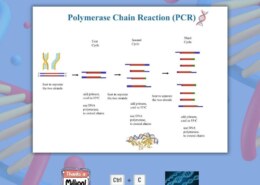What are the potential benefits and risks of using biotechnology in food production, such as lab-grown meat?
Safety considerations in Agricultural Biotechnology are crucial to ensure environmental sustainability, human health, and ethical practices. Here are key points to consider: Environmental Impact: Potential for unintended consequences on ecosystems and biodiversity. Gene flow to wild relatives and imRead more
Safety considerations in Agricultural Biotechnology are crucial to ensure environmental sustainability, human health, and ethical practices. Here are key points to consider:
- Environmental Impact:
- Potential for unintended consequences on ecosystems and biodiversity.
- Gene flow to wild relatives and impact on native species.
- Human Health:
- Allergenicity of genetically modified organisms (GMOs).
- Potential toxicity of novel proteins introduced into crops.
- Effects of increased herbicide and pesticide use on human populations.
- Ethical Concerns:
- Patenting of genetic material and its implications for small-scale farmers.
- Socioeconomic impacts on rural communities and food security.
- Regulatory Oversight:
- Stringent testing and approval processes for GMOs.
- Monitoring and labeling of genetically modified products.
- International harmonization of regulations to ensure global safety standards.
- Long-term Sustainability:
- Resistance development in pests and weeds due to continuous use of biotechnological traits.
- Preservation of soil fertility and ecosystem services.
- Public Perception and Education:
- Addressing public concerns through transparent communication and education.
- Engaging stakeholders to build trust and understanding of biotechnological advancements.
- Biosecurity:
- Risk of unintended spread of genetically modified traits beyond intended boundaries.
- Preparedness for potential misuse of biotechnology for harmful purposes.
Addressing these safety considerations requires interdisciplinary collaboration among scientists, policymakers, farmers, and the public to ensure that agricultural biotechnology contributes positively to sustainable development goals while minimizing risks to human health and the environment.
See less

Biotechnological approaches for environmental remediation and pollution control are making significant strides in addressing environmental challenges. Bioremediation is a key technique, utilizing microorganisms to degrade pollutants. Bacteria and fungi can metabolize harmful substances, such as hydrRead more
Biotechnological approaches for environmental remediation and pollution control are making significant strides in addressing environmental challenges.
Bioremediation is a key technique, utilizing microorganisms to degrade pollutants. Bacteria and fungi can metabolize harmful substances, such as hydrocarbons from oil spills or heavy metals from contaminated soil. Advanced methods involve engineering microbes to enhance their degradation capabilities, making the process more efficient.
Phytoremediation uses plants to absorb, accumulate, and detoxify pollutants from soil and water. Some plants, known as hyperaccumulators, have the unique ability to extract heavy metals and other contaminants from the environment. These plants are harvested once they reach a certain level of contamination, providing a sustainable method for cleaning up polluted areas.
Mycoremediation leverages fungi to decompose organic pollutants and heavy metals. Fungi, especially mushrooms, can produce enzymes that break down complex pollutants into less harmful substances. This method is particularly useful for cleaning up contaminated soils and industrial waste sites.
Bioaugmentation involves adding specific strains of microorganisms to contaminated environments to enhance natural degradation processes. These microorganisms are selected for their ability to break down particular pollutants, improving the efficiency of the remediation process.
Biostimulation works by adding nutrients or other substances to stimulate the activity of native microorganisms. This boosts their natural ability to degrade pollutants, making the cleanup process faster and more effective.
Enzyme-Based Remediation uses enzymes produced by microorganisms or plants to break down pollutants directly. For instance, enzymes can be applied to degrade pesticides or industrial chemicals in contaminated environments, offering a targeted approach to pollution control.
See less